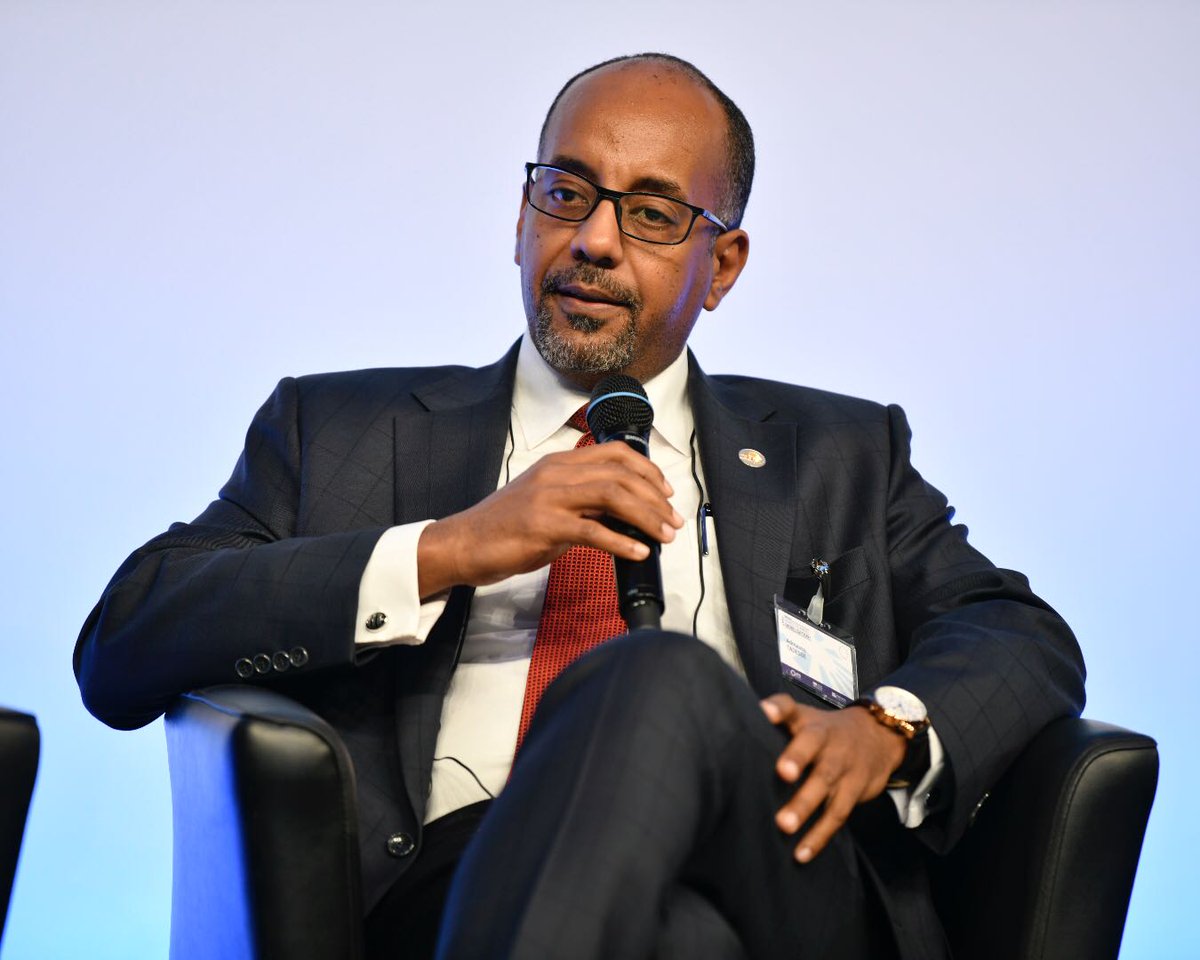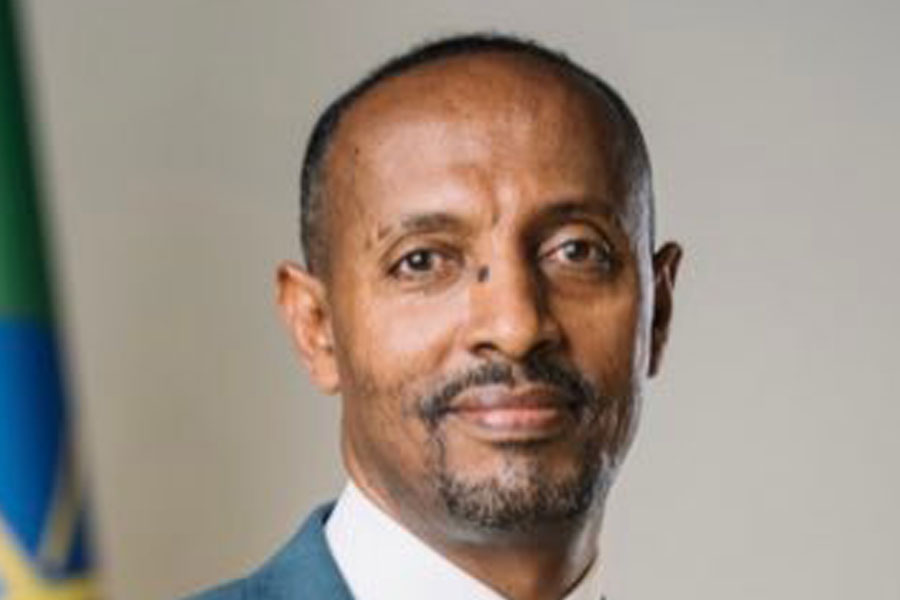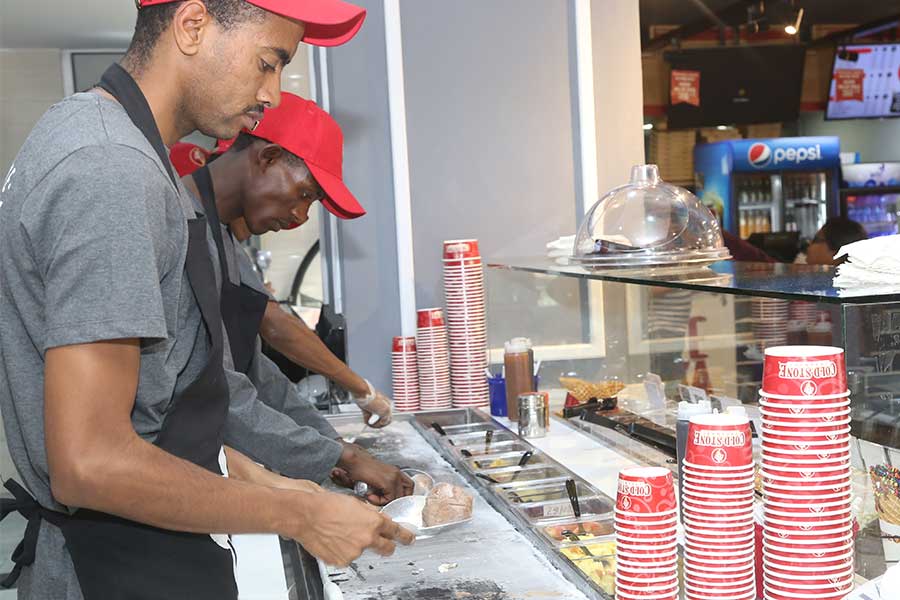
Exclusive Interviews | Nov 21,2018
Last week, the corridors of the Addis Abeba Housing Bureau were filled with residents whose faces reflected a mix of fear and distress. Among them was Tigist Adane, a 42-year-old teacher, who learned that her home of over two decades near Qera would be demolished for a new corridor project.
Hoping for a better future for her children, Tigist chose a condominium unit instead of a communal dwelling when the opportunity presented itself.
"No one told me it would be this far," she said.
Two months later, she was shown a unit on the outskirts of Lemi Kura District. The Arabsa Site, however, lacked basic amenities like electricity, water, sewage, and proper roads.
She had to come down from the seventh floor to the communal toilet. An initial down payment of 107,000 Br only added to her distress.
Tigist is the sole breadwinner for her two children and her father, who suffers from chronic kidney disease requiring regular hospital visits. Moving to a location with no nearby healthcare facilities felt like a death sentence, according to her. Armed with documents in a blue plastic bag, she arrived at the Housing Bureau to request a transfer to a more suitable condominium closer to her work and a public hospital.
"I'm here to explain why the offered location is impractical," she told Fortune.
Over 6,000 houses in her area face the same fate within a month as Addis Abeba undergoes a major transformation with five corridor projects spanning 10Km and covering 47.5hct. These 33-billion-Br projects aim to create an eco-friendly city with expanded road infrastructure, including dedicated pedestrian and bicycle lanes.
While some view this project as a necessary step towards modernisation, others raise concerns about the human cost – the displacement of thousands and the disruption of communities.
To mitigate the impact, the Addis Abeba Housing Development Corporation began offering newly built condominium units, providing a path to homeownership, albeit with a financial burden. Thousands of displaced residents occupy these houses across the city, mostly on the outskirts, such as Yeka District's Gurarra site, Lemi Kura District's Sahilitemihiret, Arabsa Jarso, Arabsa Gebriel, and Sefera Mariam sites, Bole District's Meta site, Kolfe Qeranio District's Bethel site, Nifas Silk Lafto District's Lafto site, and Akaki-Qaliti District's Gelan Gura site.
However, the conditions are far from habitable.
The Arabsa Condominium site around the Sefera Mariam area comprises over 439 blocks and over 320,000 residential spaces. Authorities took over the project from contractors at the end of 2022. Residents, already burdened by increasing rental fees and living costs, opted to move in but now face severe infrastructure limitations despite promises of utility installations upon their arrival.
Debebe Abebe, 60, moved to the vicinity three months ago, struggling to keep up with runaway inflation that did not match his 10,000 Br monthly salary. His long commutes to work are met with constant struggles due to the absence of transportation services.
"It's been a constant nightmare," he said.
Debebe recalls several appeals that had fallen on deaf ears. He had signed up for the low-cost housing scheme in 2005, one of 700,000 who had hoped to benefit from the program referred to as "20/80". Beneficiaries make a 20pc downpayment, with the balance paid through long-term mortgages from the Commercial Bank of Ethiopia at a 12pc annual interest.
With a monthly debt payment of 5,800 Br, Debebe feels robbed. He conceded that the homes were transferred to residents unfinished, leaving them to wrestle with high costs alone.
"They gave us unfinished infrastructure to fend for ourselves," he said.
He recalls constant promises by the authorities that utilities would be made available.
Lemi Kura District Administration has been a hub of condominium infrastructures, covering over 16 sites.
Gizaw Asemma, a housing coordinator, acknowledged that the lag in infrastructure was a source of frustration for many residents, attributing it to poor roads leading up to the housing project. He said the administration has continuously brought up infrastructure issues in meetings, seeking a quick fix. The administration has managed to coordinate committees for short-term solutions such as building communal toilets.
"Utilities should have been provided," he said.
About 317,000 condominium houses out of the 321,089 have been transferred to homeowners by the City Housing Corporation, including the 25,733 individuals in the 14th draw. The Corporation, tasked with constructing and transferring the houses, has struggled to complete the projects.
Getachew Degefu, head of the infrastructure development monitoring and regulation directorate, noted that they have completed most of the civil work, while left with the final touches.
"We can't say we have done a perfect job," he said.
The Corporation has only paid 60pc of its 50 billion Br debt.
"We have a lot of debt to pay," he said.
According to Getachew, financing issues where housing projects have remained highly subsidised, put a burden on the City Administration to cover the inflated cost of materials. He also acknowledged the rise in housing demand from lottery drawers to residents moved due to development plans.
The mismatched pace between different infrastructure development bureaus undermined the intended utility of projects. The absence of water and sewage facilities further worsens the condominium's unsavoury living conditions.
Abebe Tesfaye, head of the integrated housing water infrastructure facilitation directorate, noted that high demands have made water facilitation impossible.
The demand runs around 1.3 million metres daily. Meanwhile, the Addis Abeba Water & Sewage Authority manages to meet nearly 62pc through its 238 underground wells and surface water from the Legedadi, Dire, and Gefersa dams.
The current secondary sewage line stands at 1,100Km, providing access to a mere 34pc of the capital's residents, with the remaining opting for alternative sanitation modalities.
Short-term solutions have been provided to meet residents' demands, according to Abebe, including the provision of water supplies through trucks.
"It's a city-wide problem," he said.
Abebe said the Authority is constructing massive septic tanks for short-term solutions until sewage pipes are laid out.
Officials at the Addis Abeba Electric Utility blame the absence of road infrastructure for delays in transferring cables and building lines for power distribution. According to Gebeyehu Addisu, the head of the Utility, the absence of pre-work such as burying PVCs and building compact transformers has made it difficult for the different sectors to cope.
"It's a connected work," he said. "One has to come after the other."
While the City Roads Administration and Water & Sewage Authority use their finances to provide infrastructure, the Electric Utility has taken over 870 million Br from the Corporation's construction budget. A report by the Center for Affordable Housing Finance in Africa released last year estimates that Ethiopia's housing demand would require close to 486,000 new urban homes each year.
Despite the treacherous conditions, low-price homes have swayed many residents to join the condominiums on the outskirts. Getachew Amede, 64, moved into one of the blocks 10 months ago after losing his job and living off his 5,000 Br monthly pension. His wife contributed to their expenses by running a small eatery around Piassa before being moved due to the development. For his family, moving in was not a choice but a result of economic challenges.
However, the lack of basic infrastructure has been a daily struggle. Spending over 500 Br weekly for jerrycans and contributing to the alternative public latrine facility due to the lack of sewage in his vicinity has been a significant financial burden.
"The cost is more than I can handle," he said.
The Addis Abeba Roads Authority has struggled to keep up with road infrastructure deadlines after contracting the Ethiopian Construction Works Corporation.
Elias Assefa, head of the road construction contract administration directorate, blames the contractor for the delay. He said that the contractor was supposed to finish the work in one and a half years beginning in 2021, but lagged due to operational and financial inefficiencies.
"We've warned them to improve their performance," he said.
The Corporation took on the project three years ago in four sites, including Arabsa 5 and 6, with roughly 1.8 billion Br spanning across 41.1Km. Established in 2015 with over 7.7 billion Br paid-up capital, the Corporation has undertaken 4.67 billion Br worth of projects operating under the Ethiopian Investment Holdings.
Mulugeta Feyisa, project leader at the Corporation, recounts the meagre attention given to the projects by the Roads Authority. He said the absence of pre-made designs prolonged the project for six months while right-of-way issues and the rising prices of construction materials contributed to the delay.
"We were tasked to begin construction with unclear plans," he said.
Unable to continue with the finances, as material prices surged by 300pc, Mulugeta said they submitted a proposal for the adjustment of contractual value with a cost escalation adjustment of 70pc. The proposal, after going through a cascade of offices, is still pending approval from the Council of Ministers.
"Additional finances have not been approved," he said. "We did what we could with what we were given."
Housing experts believe the current system of highly subsidised condominiums is unsustainable. They observe that Public-Private Partnerships (PPPs) can be successful if flexible requirements and enabling environments are presented to prospective developers for lucrative outcomes in the industry.
Solomon Tilahun, a housing expert from the Policy Studies Institute, believes that highly subsidised condominiums are becoming less sustainable as finance shortages and construction material price surges persist.
"It will be impossible to continue like this," he said.
Given the increasing housing demand, Solomon suggests overcoming financial hurdles by establishing a national housing fund, where a limited percentage is shaved off from monthly wages and installed into a newly established mortgage bank. His research resonated with countries like Nigeria, where citizens contribute 2.5pc of their monthly salary to the fund through an established Mortgage Bank for building and renovating residential accommodations.
"Relying on housing finance alone is not a sustainable solution," he told Fortune.
PUBLISHED ON
Jul 07,2024 [ VOL
25 , NO
1262]

Exclusive Interviews | Nov 21,2018

Radar | Apr 15,2023

Radar | Apr 29,2023

Fortune News | Feb 04,2023

Advertorials | May 15,2023

Radar | Jan 01,2023

In-Picture | Oct 12,2025

Fortune News | Feb 29,2020

Fortune News | Feb 14,2024

View From Arada | Aug 12,2023

Dec 22 , 2024 . By TIZITA SHEWAFERAW
Charged with transforming colossal state-owned enterprises into modern and competitiv...

Aug 18 , 2024 . By AKSAH ITALO
Although predictable Yonas Zerihun's job in the ride-hailing service is not immune to...

Jul 28 , 2024 . By TIZITA SHEWAFERAW
Unhabitual, perhaps too many, Samuel Gebreyohannes, 38, used to occasionally enjoy a couple of beers at breakfast. However, he recently swit...

Jul 13 , 2024 . By AKSAH ITALO
Investors who rely on tractors, trucks, and field vehicles for commuting, transporting commodities, and f...

Oct 18 , 2025
The political establishment, notably the ruling party and its top brass, has become p...

Oct 11 , 2025
Ladislas Farago, a roving Associated Press (AP) correspondent, arrived in Ethiopia in...

Oct 4 , 2025
Eyob Tekalegn (PhD) had been in the Governor's chair for only weeks when, on Septembe...

Sep 27 , 2025
Four years into an experiment with “shock therapy” in education, the national moo...